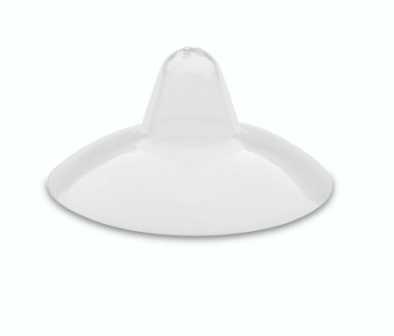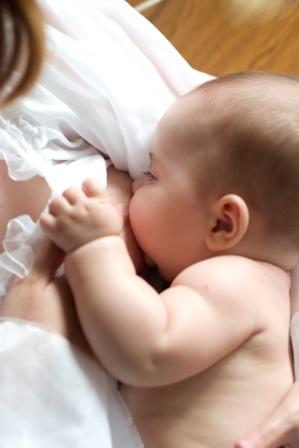Nipple Shield: Friend or Foe?
/Last week, I spoke to a mother whose 1-month-old baby was born 4 weeks preterm. She was breastfeeding with a nipple shield, which she was given in the hospital, and she was confused by conflicting advice. Should she pump after feedings? Was her baby getting enough milk? How should she wean from the shield? This was her sixth breastfeeding baby but her first preterm baby and first time using a shield. She was emotional and unsure of herself. My answers below were based on the research described in my book, Breastfeeding Answers Made Simple.
Express milk after breastfeeding? As long as her baby was gaining weight normally (which she was), there was no reason to pump after feedings. A study of 54 mothers and babies compared babies breastfeeding with a nipple shield to those breastfeeding without it and found no difference in weight gain during the first 2 months of life. 1 Although one 1980 study found babies took 22% less milk at the breast with a shield, 2 these mothers used thicker, rubber shields. As long as the baby is suckling effective, today’s thin, silicone shields do not appear to decrease milk intake during breastfeeding.
How to gauge baby’s milk intake. Weight gain is the best way to know a breastfeeding baby is getting enough milk. This baby was gaining well, so adequate milk intake was guaranteed. After feedings, other signs of milk intake include reduced feelings of breast fullness and milk seen in the tip of the shield.
Weaning off the shield. A hospital nurse told this mother to wean her baby from the shield by gradually cutting it away. This strategy made sense with rubber shields, but cutting silicone shields produces sharp edges that could irritate the baby’s mouth. A better strategy is to start the baby feeding with the shield and when the mother hears swallowing to quickly slip off the shield and slip in the breast. But I told this mother to be patient. Her preterm baby may not be ready to wean from the shield. One study found nipple shields increased milk intake in preterm babies having trouble suckling actively and staying on the breast.3 While not all preterm babies need to use a shield, I told this mother that for now her preterm baby may breastfeed better with it. The baby’s readiness to wean from the shield is as important as the mother’s readiness.
In general, should nipple shields be considered “friend” or “foe”? It depends. As 88% of the mothers in one study reported,4 when used appropriately, nipple shields can help preserve breastfeeding. Or—like any breastfeeding tool—they can be misused and undermine it. In some cases, weaning off the shield may be the right thing to do. In others, a mother should be patient and wean from the shield later rather than decrease her baby’s breastfeeding effectiveness or turn the breast into a battleground.
References
1Chertok, I. Reexamination of ultra-thin nipple shield use, infant growth and maternal satisfaction. J Clin Nurs 2009;18(21):2949-2955.
2Woolridge, M. et al. Effect of a traditional and of a new nipple shield on sucking patterns and milk flow. Early Hum Dev 1980; 4(4):357-364.
3 Powers, D., & Tapia, V. B. Women's experiences using a nipple shield. J Hum Lact 2004; 20(3):327-334.
4 Meier, P. et al. Nipple shields for preterm infants: effect on milk transfer and duration of breastfeeding. J Hum Lact 2000; 16(2):106-114.





